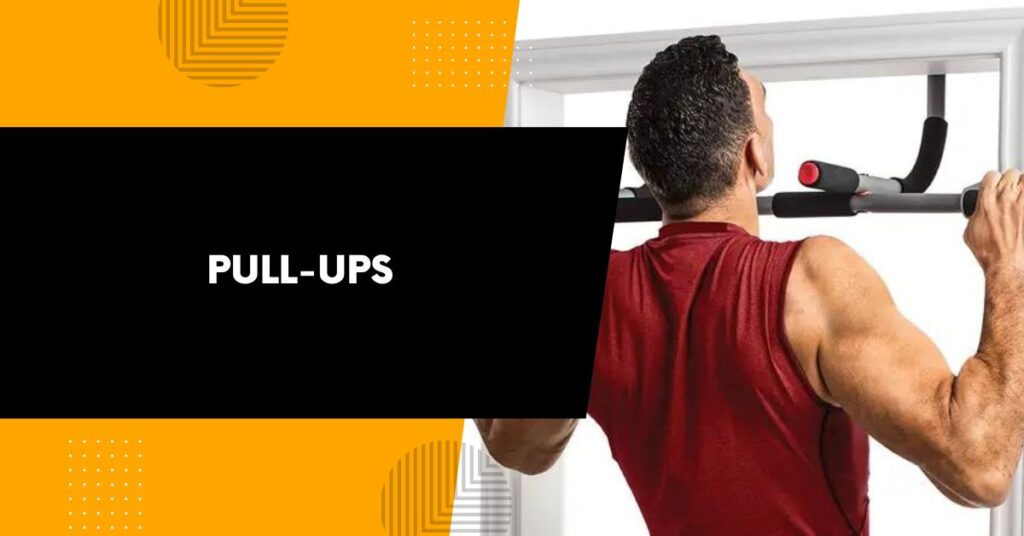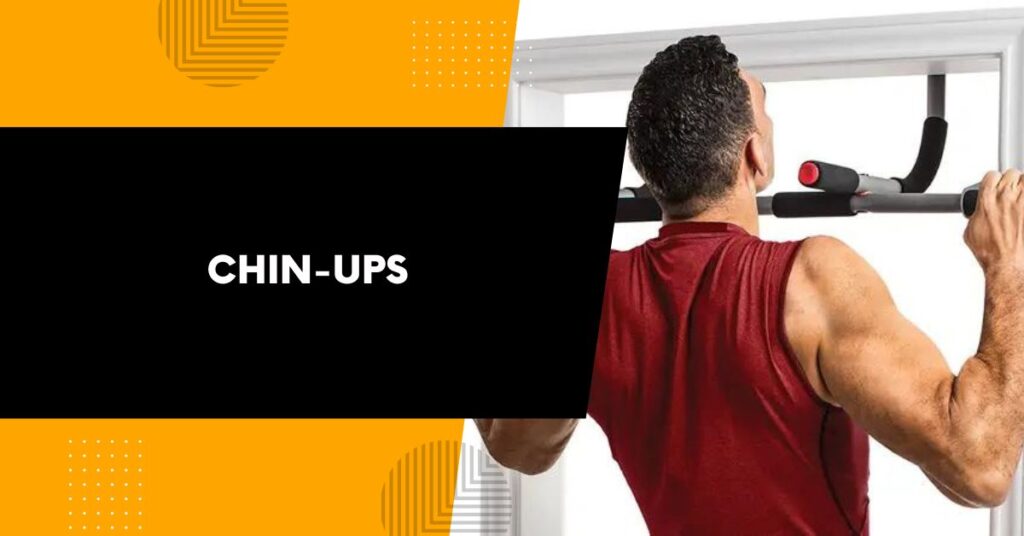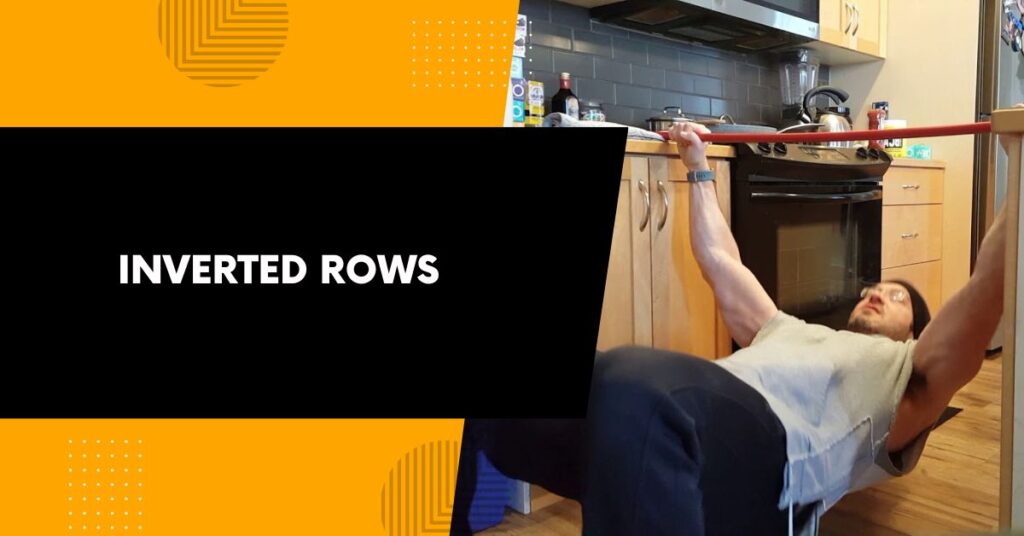Looking for ways to work on your upper body strength with Pull Exercises At Home No Equipment? Check out our guide for effective pull exercises that you can do at home with no equipment required, including pull-ups, negative pull-ups, and Australian pull-ups. Start building your strength today!
Introduction
Pull exercises are an essential part of any fitness program as they help to build upper body strength, improve posture, and prevent injuries. Doing pull exercises at home without equipment is a convenient and cost-effective way to maintain a healthy and fit lifestyle.
1) Pull-Ups.2) Chin-Ups.3) Inverted Rows.4) Doorway Rows.5) Shoulder Blade Squeezes
1. Pull-Ups
Pull-ups are a classic exercise that has been used for decades to build upper body strength, particularly in the back, arms, and shoulders. This exercise involves gripping a horizontal bar with an overhand grip and pulling yourself up until your chin is above the bar.

- To perform a pull-up without equipment, grip the bar with your palms facing away from your body, and hang from the bar with your arms fully extended.
- Then, pull yourself up towards the bar until your chin is above the bar, and lower yourself back down to the starting position.
- Repeat for as many repetitions as you can, gradually increasing the number of repetitions and sets as you become stronger.
2. Chin-Ups
Chin-ups are a type of pull-up exercise that primarily targets the muscles in the biceps and upper back. While chin-ups typically require a bar or other equipment to perform, there are several ways to do chin-ups without equipment, making it possible to still benefit from this challenging exercise from the comfort of your own home.
One of the most effective ways to do chin-ups without equipment is by using a sturdy doorframe.

- To perform a chin-up using a doorframe, start by finding a door that has a sturdy frame and can support your weight.
- Then, grip the top of the doorframe with both hands, with your palms facing toward your body.
- Use your arms to pull yourself up towards the doorframe until your chin is above the frame, and then lower yourself back down to the starting position.
- Repeat for as many repetitions as you can, gradually increasing the number of repetitions and sets as you become stronger.
Benefits
There are many benefits to performing chin-ups, and the following are a few of them:
- Build Upper Body Strength: Chin-ups are a compound exercise that work for multiple muscle groups simultaneously. By performing chin-ups regularly, you can develop significant upper body strength, particularly in the biceps, lats, and shoulders.
- Improve Grip Strength: Grip strength is crucial in many daily activities and sports. By holding onto the bar during chin-ups, you’ll improve your grip strength, which can help you in other exercises like deadlifts, rows, and pull-ups.
- Increase Muscle Definition: Chin-ups can help you achieve a more defined back, biceps, and shoulders, giving your upper body a more aesthetic appearance.
- Increase Endurance: Since chin-ups are a challenging exercise, doing multiple reps can help improve your endurance and overall fitness level.
- No Equipment Needed: Chin-ups can be done using a chin-up bar, a tree branch, or any other sturdy surface that can support your body weight, making them a convenient exercise that can be done almost anywhere.
3. Inverted Rows
Inverted rows, also known as horizontal pulls, are an excellent exercise for building upper back and shoulder strength. While this exercise typically requires a bar or other equipment to perform, there are several ways to do inverted rows without equipment, making it possible to still benefit from this exercise from the comfort of your own home.

One of the most effective ways to do inverted rows without equipment is by using a sturdy horizontal surface, such as the edge of a sturdy table or countertop.
- To perform an inverted row using a table or countertop, start by lying underneath the table or countertop, facing upwards.
- Then, reach up and grip the edge of the surface with both hands, with your palms facing towards your body.
- Use your arms to pull your chest up towards the surface, and then lower yourself back down to the starting position.
- Repeat for as many repetitions as you can, gradually increasing the number of repetitions and sets as you become stronger.
4. Doorway Rows
Doorway rows are a type of inverted row exercise that can be performed using a doorway. This exercise is also known as the horizontal pull or door pull exercise. Doorway rows are similar to traditional inverted rows, but instead of using a bar or suspension trainer, you use a doorway to perform the exercise.

- To perform doorway rows, stand facing a doorway and grip the door frame with both hands.
- Lean back, keeping your body straight and your feet firmly planted on the ground. Pull your chest towards the door frame, keeping your elbows close to your body.
- Hold the position briefly, then slowly lower yourself back down to the starting position.
5. Shoulder Blade Squeezes
Shoulder blade squeezes, also known as scapular squeezes, are simple exercises that can be done to help improve your posture and alleviate upper back and neck tension. Here’s how to do them:

- Sit up straight in a chair with your feet flat on the floor and your arms relaxed at your sides.
- Take a deep breath and squeeze your shoulder blades together, making sure they point in the same direction as your spine..
- Hold the squeeze for 5-10 seconds, then release.
- Several times a day, repeat for 10-15 repetitions.
It’s important to note that this exercise should not cause pain. If you experience any discomfort, stop the exercise immediately and consult a healthcare professional.
Benefits of pull exercises at home no equipments
The purpose of this article is to examine the benefits of pulling exercises that can be performed at home without the use of equipment.

- Builds Upper Body Strength: Pull exercises are an effective way to build strength in your upper body muscles, including your back, biceps, and shoulders. These muscles are essential for daily activities, such as lifting objects, carrying groceries, or doing yard work.
- Improves Posture: Pull exercises can help improve your posture by strengthening the muscles that support your spine and shoulder blades. By doing pull exercises, you can help reduce the negative effects of sitting for long periods and improve your overall spinal health.
- Increases Grip Strength: Many pull exercises require a strong grip, which can help improve grip strength, an important factor for performing daily activities, such as opening jars, carrying objects, and typing.
- Can Be Done Anywhere: Pull exercises can be done anywhere, even in a small space, making them a convenient option for those who don’t have access to a gym or prefer to work out at home.
- Helps Burn Calories: Pull exercises are a great way to burn calories and lose weight. Because they engage multiple muscle groups at once, they can help increase your heart rate and promote fat loss.
- Reduces the Risk of Injury: By strengthening the muscles in your upper body, pull exercises can help reduce the risk of injury to the back, shoulders, and arms.
- Improves Overall Fitness: Pull exercises can help improve your overall fitness level by increasing your strength, endurance, and flexibility. By incorporating pull exercises into your routine, you can improve your overall physical health and well-being.
- Enhances Athletic Performance: Pull exercises can improve athletic performance in activities that require upper body strength and power, such as climbing, swimming, and rowing. By incorporating pull exercises into your routine, you can increase your strength and power in these activities, leading to improved performance.
FAQ’s
1. Are pull exercises better?
This simple ratio can result in dramatic improvements in health, body composition, and performance.
2. Is it beneficial to do pull-ups every day?
You will see the most benefit from pulling ups if you include them in your regular fitness routine. Perform them every two to three days to achieve the best results
3. Is it better to train push or pull?
When you perform a push-pull routine, you have the opportunity to rest one set of muscles, which aids in recovery and growth.
4. Are pull muscles stronger than push?
In any pulling movement, the back muscles are much larger than the pushing muscles (think about how large the lats are compared to the chest), so it makes sense that we are stronger at pulling.
5. What are the benefits of pushing and pulling exercises?
It is possible to become stronger and faster by focusing on how you move rather than what parts of your body you move.
Conclusion
pull exercises can be performed at home without any equipment, making it easy to improve your upper body strength and overall fitness from the comfort of your own home. By incorporating exercises like pull-ups, inverted rows, and chin-ups into your routine, you can achieve a challenging workout and see progress in your strength over time.

